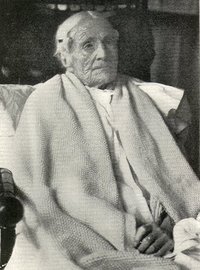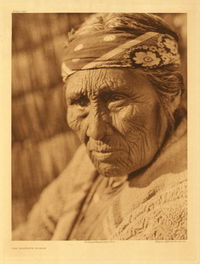Senescence
In biology, senescence is the combination of processes of deterioration which follow the period of development of an organism. For the science of the care of the elderly, see gerontology; for experimental gerontology, see life extension. The word senescence is derived from the Latin word senex, meaning "old man" or "old age." more...
Cellular senescence is the phenomenon where cells lose the ability to divide. In response to DNA damage (including shortened telomeres) cells either senesce or self-destruct (apoptosis) if the damage cannot be repaired. Organismal senescence is the aging of whole organisms. The term aging has become so commonly equated with senescence that the terms will be used interchangeably in this article.
Aging is generally characterized by the declining ability to respond to stress, increasing homeostatic imbalance and increased risk of disease. Because of this, death is the ultimate consequence of aging. Differences in maximum life span between species correspond to different "rates of aging". For example, inheritance make a mouse elderly at 3 years and a human elderly at 90 years. These genetic differences relate to the efficiency of DNA repair, antioxidant enzymes, rates of free radical production, etc.
Some researchers in gerontology (specifically biogerontologists) regard aging itself as a "disease" that may be curable, although this view is controversial. To those who accept the view, aging is an accumulation of damage to macromolecules, cells, tissues and organs. Advanced biochemical and molecular repair technologies may be able to fix the damage we call aging (thereby curing the disease and greatly extending maximum lifespan). People who hope to wish to extend human maximum life span through science are called life extensionists.
Genetic and environmental interventions are known to affect the life span of model organisms. This gives many hope that human aging can be slowed, halted, or reversed. Dietary calorie restriction, by 30 percent for example, extends the life span of yeast, worms, flies, mice, and monkeys. Several genes are known to be necessary for this extension, and modification of these genes is also sufficient to produce the same effect as diet.
Resveratrol, a polyphenol found in the skin of red grapes, was reported to extend the lifespan of yeast, worms, and flies, although this data has since been disproven in yeast and has yet to be verified in flies.
Theories of aging
The process of senescence is complex, and may derive from a variety of different mechanisms and exist for a variety of different reasons. However, senescence is not universal, and scientific evidence suggests that cellular senescence evolved in certain species as a mechanism to prevent the onset of cancer. In a few simple species, senescence is negligible and cannot be detected. All such species have no "post-mitotic" cells; they reduce the effect of damaging free radicals by cell division and dilution. Such species are not immortal, however, as they will eventually fall prey to trauma or disease. Moreover, average lifespans can vary greatly within and between species. This suggests that both genetic and environmental factors contribute to aging.
Read more at Wikipedia.org




